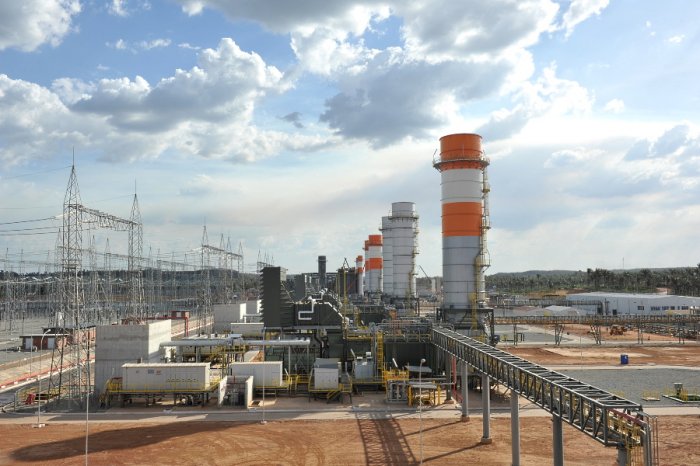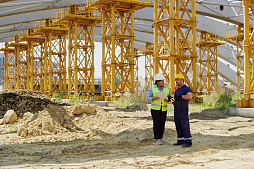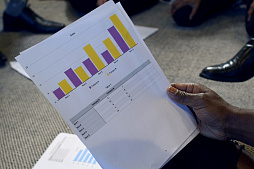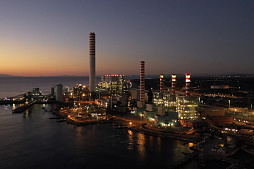After receiving the necessary documents (application form and project presentation), our team will try to review your request as soon as possible, and leading experts will offer the best options for project funding.
The purpose of the financial model of a mining and processing plant is to answer the question whether the proposed project can provide a sufficient return on capital and create additional value for business owners.
The cost of building a mining and processing plant, taking into account geological exploration, engineering, research, construction, purchase / installation of equipment, infrastructure development and staff training, can amount to billions of euros in the case of large projects.
This is a huge investment even for such market giants as Glencore, ArcelorMittal, BHP or POSCO.
Obviously, developing a financial model for such projects is a great responsibility.
ESFC Investment Group is an international company with Spanish roots that provides a wide range of financial, engineering, investment and consulting services for large businesses around the world.
In particular, we offer project finance, financial modeling, as well as loan guarantees, financial advice and comprehensive investment support for mining projects.
Basics of financial modeling in the mining industry
The construction of a mining and processing plant is usually a colossal investment project that greatly affects the fate of the mining business, and also changes the lives of local communities, regions, and sometimes entire countries.Attracting hundreds of millions of euros in the form of investments and long-term loans requires a comprehensive financial analysis and forecast from the project initiators, which is why the financial modeling of mining and processing plants is considered one of the most complex and demanding services in this area.
The main difficulty is modeling the discounted cash flows of an investment project, taking into account the changing value of money in the required time horizon. Potential investors, lenders and project sponsors must be clear about whether the mining and processing plant's revenues will be sufficient to repay the project debts in accordance with the approved schedule, while still allowing the project participants to earn an adequate profit.
Professional discounted cash flow (DCF) modeling is an important part of a feasibility study and allows stakeholders to test the economic viability of a capital-intensive project with long-term loans or investments.
Cash flow modeling should be carried out throughout the project development cycle, increasing in detail as more project information becomes available.
As the mining project develops, detailed engineering studies and market analysis should be carried out and capital costs, operating costs and projected sales can be determined with reasonable accuracy. Thus, the cash flow model will be more accurate and will include tax calculations, sensitivity analysis, as well as full project financing scenarios.
When evaluating the project documentation, the potential investor/lender will carefully examine the cash flow model of the project. Often, capital providers use the professional services of independent consultants to test proposed financial models. The investor/lender will also conduct a detailed risk analysis and evaluate the project's funding sources to determine the best scenario.
Discounted cash flow modeling demonstrates the viability of a mining project not only by verifying that the revenues generated are significantly higher than the costs and debt service requirements, but also by measuring the present value of these funds.
The principle behind DCF-based financial modeling and analysis is that any project should be compared to investing the same cash flow in alternative projects.
One of the main issues of the analysis is how to choose the most appropriate discount rate. The discounted cash flows can be used to determine the net present value of a mining project (NPV). It includes many components, including an assessment of the potential of a mineral deposit to generate future profits. Mining projects with NPV greater than 0 will generate more income than their costs, at a minimum acceptable rate of return, and any mutually exclusive investment alternatives can be ranked by NPV.
Internal rate of return (IRR) and payback period can also be calculated based on a discounted cash flow model. Internal rate of return refers to the discount rate at which the net present value of all cash flows at the start of the project is zero.
A mining project is considered profitable if the IRR is greater than the opportunity cost of capital, and mutually exclusive investment alternatives are ranked by IRR value.
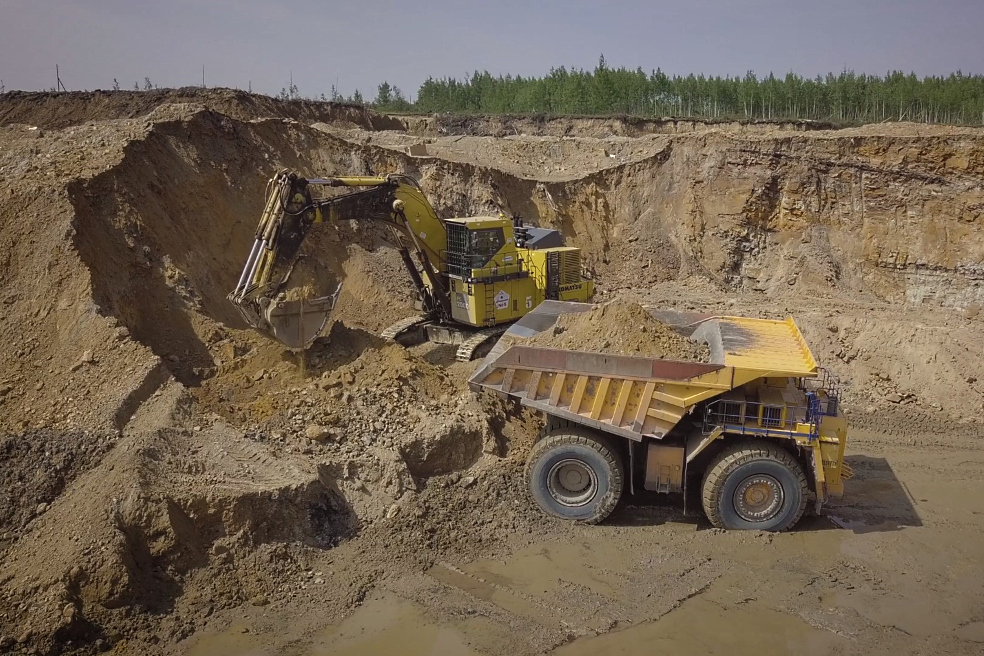
The payback period is the period of time required for the initial investment to pay off from the flow of positive cash flows.
This indicator is considered secondary and is usually not used independently for making financial decisions, since it does not take into account the change in the cost of resources over time.
Regardless of the approach chosen and the parameters used, the most important requirements for a financial model are convenience, consistency and operational flexibility. Developed in the form of spreadsheets or software applications, such a model should provide easy access to key financial indicators and forecasts to any interested person.
Development of financial model for mining and processing plant
In large mining projects, spreadsheets with financial indicators can be extremely complex and large-scale, so the financial model of the mining and processing plant is mainly implemented in the form of special software.This allows users to easily follow the calculation logic and change any project parameters by introducing new input data. Such a model should be accurate, concise and adaptable.
To achieve this goal, finance teams often use specialized software products designed for the financial evaluation of mining projects. Such programs contain the main parameters, stages and formulas inherent in the financial models of mines, quarries and mining and processing plants of various sizes. It takes into account a number of engineering, production, geological, environmental and other project parameters that may affect the financial result.
The discounted cash flow method described above has many advantages for project participants, as it helps to predict the expected results at the early stages of the project.
However, the effectiveness of the DCF-based approach directly depends on the professional experience of the project team, including in the field of mining engineering and mining project financing.
The first step in creating a spreadsheet cash flow model is to collect all available information about the mining and processing plant project. This includes all engineering information that will allow calculation of mine life, annual ore output and salable output. It is also necessary to estimate the cost of the project so that capital costs, annual operating costs and other costs can be calculated. The financial model should take into account the projected price of products in a certain time horizon, tax rates, discount rates, interest on loans and other financial parameters.
The complexity of financial modeling of projects related to the extraction and processing of minerals can be largely explained by the life of the deposits.
Many iron ore deposits, for example, have been successfully exploited for 50 years or more, which ensures the prosperity of mining and processing enterprises and related infrastructure.
At the same time, the long life of a mining project is inevitably associated with additional investments in modernization and expansion, which may be required 10-20 years after the facility is put into operation. For this reason, the rational financial planning horizon should not exceed 15 years for such projects. On the other hand, too rapid depletion of the field jeopardizes project financing plans, as it does not provide an adequate return on investment.
As mentioned above, the input data determine the success of financial modeling.
Input data for building a financial model of a mining and processing plants based on DCF include the following:
• Main parameters of the project.
• A complete report on mineral deposits.
• Production potential, taking into account the chosen technology.
• Estimation of capital expenditures and operating expenses.
• Forecasts of product prices, demand and market conditions.
• Parameters that determine the life of the project, etc.
In addition to a deep understanding of mining and processing business principles, the project team must understand the specific product (pellets, iron ore concentrate, non-metallic products, crushed stone) in order to correctly develop a financial model.

That is why it is important to contact professionals who have sufficient practical experience in a particular field.
During the planning of an investment project, numerous additional costs are expected, such as infrastructure development, obtaining building permits, environmental certificates and much more. All these expenses incurred before the commissioning of the facility begin to pay off only after the mining and processing plant begins to receive a stable income.
This moment marks the end of the project financing period and the beginning of the project debt repayment period.
Table: Input data for the financial model of the mining and processing plant.
| Parameters | Description |
| Mineral reserves | Investors and lenders to a mining project require accurate information about the size of the deposit, the grade of valuable minerals, and potential production parameters. It is important to understand the amount of ore, the expected productivity of the facility, the amount of overburden that must be removed to extract each ton of ore, and other parameters. |
| Production rate | This parameter of a mining project affects the life of the mine, and also determines the annual costs for the purchase of new equipment and the replacement of old equipment. It is also important to predict the dynamics of the production rate during the first years of operation of the facility in order to model financial flows. |
| Capital expenses | These are expenses incurred by participants in a mining project in a particular year that will bring profit in the subsequent period. The most important capital costs in the construction of a mining and processing plant are the costs of building a mine or quarry, purchasing mining and processing equipment, as well as developing related infrastructure. |
| Operating expenses | Operating expenses (OPEX) refer to project expenses that generate profit only in a particular year and are calculated annually. The financial model should, among other things, take into account the operating costs per unit of output produced (for example, per ton of iron ore concentrate), including the cost of transporting the product by rail or road. It is also important to take into account annual fixed costs that are little dependent on production capacity, including salaries of administrative staff, maintenance of premises, license fees and others. |
| Product price | The cash flows underlying the financial model are directly dependent on the price of the product in the target markets. In particular, it is important to develop the most realistic long-term price scenarios for iron, nickel, tin or other metals produced by a particular mining and processing plant. |
| Capital structure | Companies that plan to build a mining and processing enterprise need to develop the right capital structure to optimally implement the project and service the resulting debt in the future. |
| Project lifespan | Each mining project has a certain lifespan, which is largely dependent on the depletion of mineral resources. For this reason, the correct geological assessment of the deposit, along with engineering, financial and market studies, plays an important role in the modeling of projects of this type. |
The mining and processing plant project requires participants to take into account key financial parameters, such as the discount rate, net present value of capital, taxation, inflation rate, capital structure, lending conditions and others.
All this forms the basis for constructing certain scenarios for financing an investment project.
To determine the true cost of capital in a financial model, experts can use the weighted average cost of capital (WACC) or an approved discount rate. Since net present value is calculated based on post-tax cash flows, an adjustment is made for tax changes in interest payments on project debt.
WACC in mining projects can vary significantly depending on the specific ratio of debt and equity in the project financing structure.
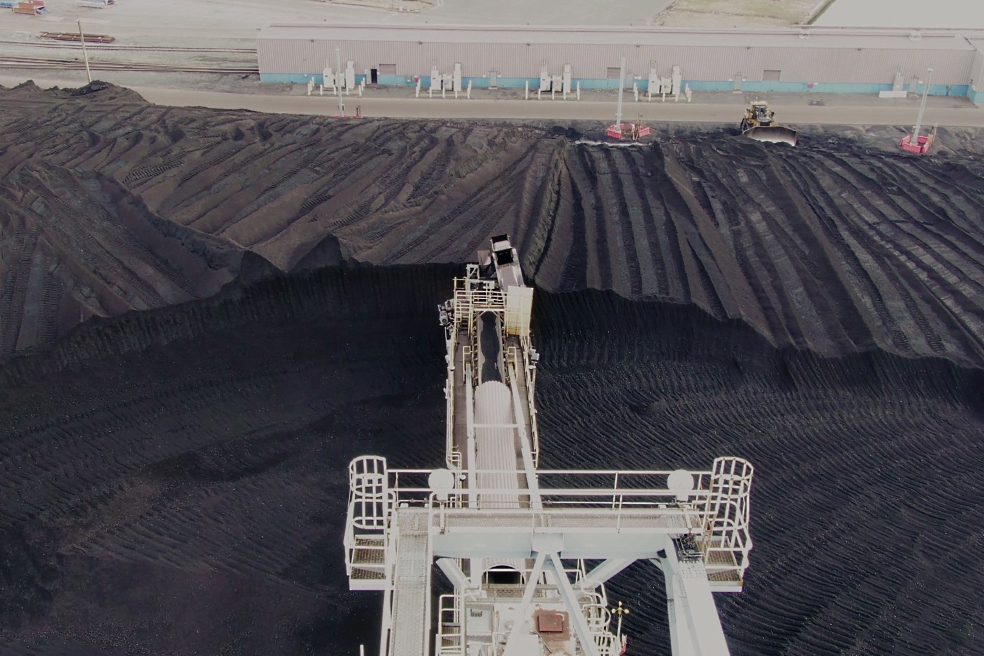
The cost of equity is generally higher than the cost of debt, reflecting the high expectations of capital providers. In general, the larger the proportion of capital investments financed by debt, the lower the WACC and the more favorable NPV.
The debt/equity ratio and project debt are also determined based on the financial model. In general, companies that simultaneously implement numerous investment projects and require significant financial resources seek to maximize the share of debt capital.
The optimal period for using debt financing can be agreed between the sponsor and the lender. In practice, long-term investment loans for the construction of mining and processing plants are issued for a period of 5-10 years or more.
To complete the cash flow model, it is necessary to take into account the loan repayment schedule and grace period, which may be established by the loan agreement.
Loan repayment can be made in equal shares or depending on the performance of the object, which is generally considered preferable for sponsors.
All this should be reflected in the finished model.
Project finance in the construction of mining and processing plants
If the financing of a new actively developing mining project requires financial resources that significantly exceed the capabilities of the participants, it is recommended to consider project finance (PF) schemes.In these leveraged schemes, the project's debt is repaid using the cash flows generated by the mining and processing plant as a result of its production activities.
Financing is carried out without recourse to the borrower, which provides additional benefits for sponsors.
Given the high risk for the lender, banks always carefully analyze the project, paying special attention to the financial model. Obviously, potential lenders will be interested in the financial strength of the mining project in the most stressful scenarios.
Despite the positive results of financial modeling, banks usually require loan guarantees from sponsors. When it comes to a large-scale project carried out by a young company with minimal assets, the role of loan guarantees increases dramatically.
The peculiarity of large projects in the mining industry is that small companies with promising deposits cannot receive project financing on adequate terms until they organize mining and processing at a certain level. Therefore, such companies have to attract initial investments from other sources (for example, issue of shares) to bring the project to viable indicators. In subsequent stages, financing becomes much easier and more affordable, as potential lenders have more confidence in the success of the project.
It should also be noted that project finance schemes are widely used for mining projects based on well-established technologies. In particular, this includes the modernization of mining equipment at existing facilities, the rehabilitation of old quarries, and so on.
It is quite difficult to use PF schemes to finance innovative projects or poorly explored deposits due to the high risk.
Mining projects are capital-intensive and high-risk initiatives, so they are often not considered attractive enough for traditional financing. Project sponsors often avoid taking on the risks and incurring debt associated with traditional lending or issuing debt securities, even when these instruments are available.
Project finance is an attractive alternative because it allows project participants to rationally allocate risks.
An important advantage of non-recourse financing is that the sponsor is not obligated to service the debt if the cash flows generated from mining are not sufficient to pay the principal and interest payments. The lender is secured primarily by a credit guarantee and adequate collateral.
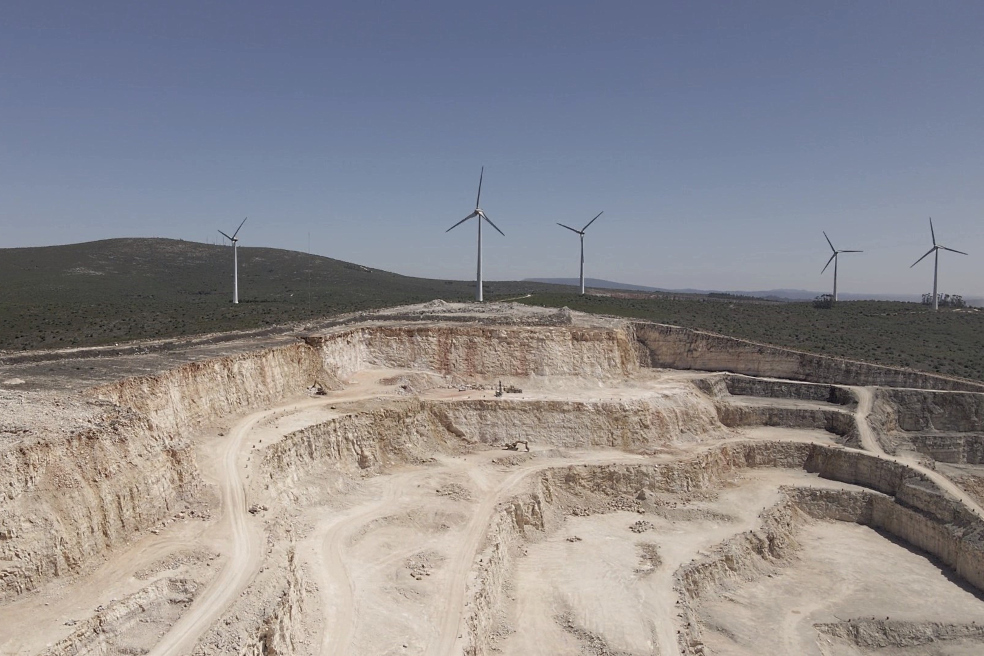
Financial modeling and in-depth study of the project allows lenders to avoid unforeseen shortcomings discovered during the construction phase and during the initial period of the project.
When the project has passed a comprehensive review, the providers of capital will have sufficient confidence in financing the investment project.
Project finance may result in a lower cost of capital because a lower interest rate is used. This is achieved, in particular, through a flexible approach to taxation.
Project finance schemes should be organized in such a way as to maximize potential tax benefits.
The process of making a decision on financing a mining and processing plant project will depend heavily on the quality of the prepared project documentation and financial model. The lender takes note of the information memorandum and often hires an independent financial advisor to perform due diligence or prepare an independent feasibility study.
Banks can build their own financial models and perform detailed sensitivity analysis to make the final decision on financing.
If you are interested in services for the development of a financial model for a mining and processing plant, quarry or other mining project, please contact our consultants.
ESFC Investment Group provides a full range of financial, investment and consulting services for large businesses in the mining and processing of minerals around the world.




